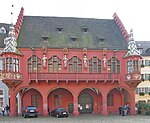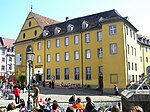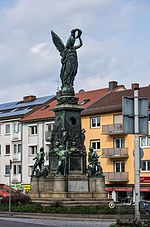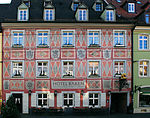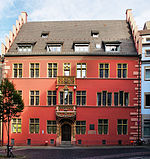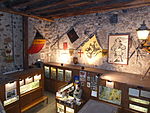Freiburg Minster
Buildings and structures in Freiburg im BreisgauBurial sites of the House of ZähringenGothic architecture in GermanyRoman Catholic cathedrals in Baden-WürttembergTourist attractions in Freiburg im Breisgau

Freiburg Minster (German: Freiburger Münster or Münster Unserer Lieben Frau) is the cathedral of Freiburg im Breisgau, southwest Germany. The last duke of Zähringen had started the building around 1200 in romanesque style. The construction continued in 1230 in Gothic style. The minster was partly built on the foundations of an original church that had been there from the beginning of Freiburg, in 1120. In the Middle Ages, Freiburg lay in the Diocese of Konstanz. In 1827, Freiburg Minster became the seat of the newly established Catholic Archdiocese of Freiburg, and thus a cathedral.
Excerpt from the Wikipedia article Freiburg Minster (License: CC BY-SA 3.0, Authors, Images).Freiburg Minster
Münsterplatz, Freiburg im Breisgau Old Town
Geographical coordinates (GPS) Address External links Nearby Places Show on map
Geographical coordinates (GPS)
| Latitude | Longitude |
|---|---|
| N 47.995555555556 ° | E 7.8530555555556 ° |
Address
Münster Unserer Lieben Frau (Freiburger Münster)
Münsterplatz 1
79098 Freiburg im Breisgau, Old Town
Baden-Württemberg, Germany
Open on Google Maps

